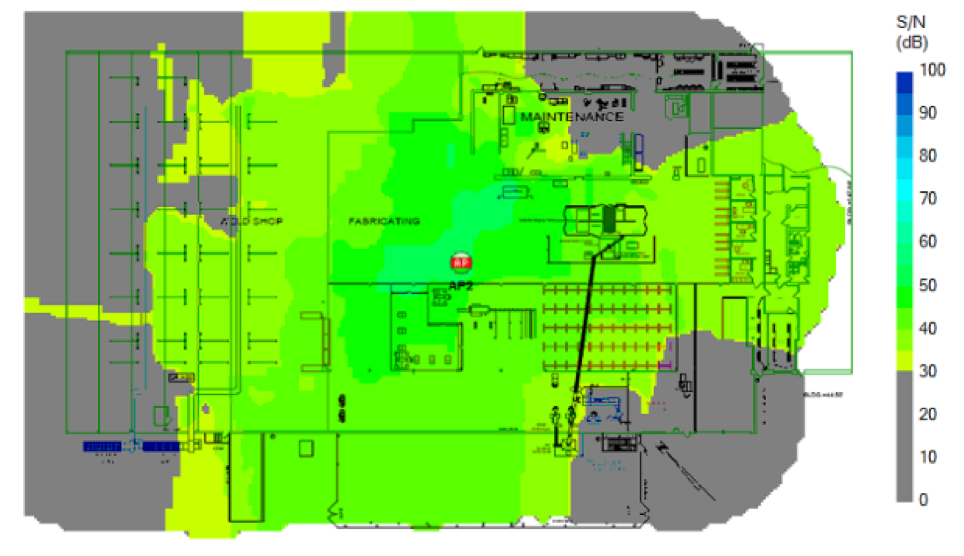
- #RF SITE SURVEY TOOLS HOW TO#
- #RF SITE SURVEY TOOLS VERIFICATION#
- #RF SITE SURVEY TOOLS PROFESSIONAL#
#RF SITE SURVEY TOOLS HOW TO#
Refer to Using Active Mode for more information about how to use the ACU Site Survey tool in active mode. It also enables you to set parameters that govern how the site survey is performed (such as the data rate). In active mode, the client adapter actively sends and receives low-level RF packets to or from its associated access point and provides information on the success rate. Refer to Using Passive Mode for more information on how to use the ACU Site Survey tool in passive mode. Instead, it listens to the traffic that the client adapter hears and displays the results. In passive mode, the tool does not initiate any RF traffic to understand RF behavior. The ACU Site Survey tool can operate in two modes. What are the two modes in which the Aironet Client Utility (ACU) Site Survey tool can be used?Ī. The feedback that you receive can help you to eliminate areas of low RF signal levels that can result in a loss of connection between the client adapter and its associated access point (or other infrastructure device). The current status of the network is read from the client adapter and displayed four times per second so you can accurately gauge network performance. The tool operates at the radio frequency (RF) level and is used to determine the best placement and coverage (overlap) for the infrastructure devices of your network. The ACU Site Survey tool can assist you in conducting a site survey. What is the function of the Aironet Client Utility (ACU) Site Survey tool?Ī. The NEMA has a rating system for these enclosures, which are generally called NEMA enclosures. These APs might need to be mounted inside a sealed enclosure. Sometimes access points (APs) are located in areas where they are subject to extreme moisture, temperatures, dust and particles. What are National Electronics Manufacturers Association (NEMA) enclosures?Ī. Record the locations and log of signal readings as well as data rates at outer boundaries. While the survey is performed, relocate APs as needed and re-test. Make sure to use the same AP model for the survey that is used in production.

These locations include the power and wired network access, cell coverage and overlap, channel selection, and mounting locations and antenna.

Determine preliminary access point (AP) locations.

#RF SITE SURVEY TOOLS PROFESSIONAL#
A professional installer is needed for optimal results. What are the steps to perform a site survey?Ī. Variety of antennas (this depends on the requirement of the firm) Some of the basic equipment and utilities that are required for the completion of a site survey include: What basic equipment is required for the completion of a site survey?Ī.
#RF SITE SURVEY TOOLS VERIFICATION#
The site survey documentation serves as a guide for network design and for the installation and verification of the Wireless communication infrastructure. A proper site survey provides detailed information that addresses coverage, interference sources, equipment placement, power considerations and wiring requirements. What are the results of a Wireless site survey?Ī. The four main design requirements that need to be taken care of while a site survey is performed are: What are the design constraints that a proper site survey needs to address ?Ī. A site survey that determines the RF coverage area in a facility also helps to choose the number of Wireless devices that a firm needs to meet its business requirements. It helps us to discover regions where mulitpath distortion can occur, areas where RF interference is high and find solutions to eliminate such issues. A site survey helps define the contours of RF coverage in a particular facility. In order to address these, you need to find the regions where these issues occur. Examples of RF issues include mulitpath distortion, hidden node problems, and near/far issues. In a Wireless network, many issues can arise which can prevent the radio frequency (RF) signal from reaching all parts of the facility. What is the need for Wireless Site Survey?Ī. A site survey is a task-by-task process by which the surveyor studies the facility to understand the RF behavior, discovers RF coverage areas, checks for RF interference and determines the appropriate placement of Wireless devices.
A radio frequency (RF) site survey is the first step in the deployment of a Wireless network and the most important step to ensure desired operation. This document provides information on the most frequently asked questions (FAQ) about a Wireless Site Survey.Ī.


 0 kommentar(er)
0 kommentar(er)
